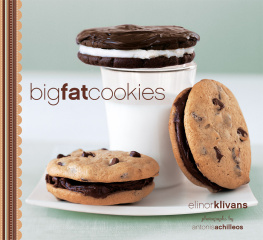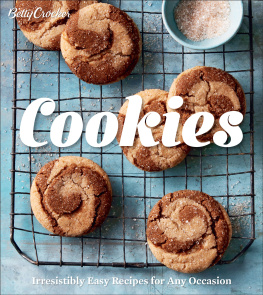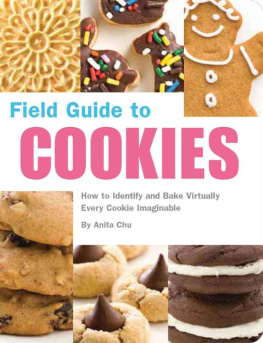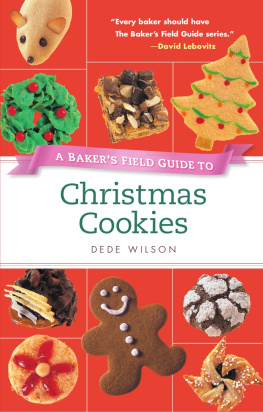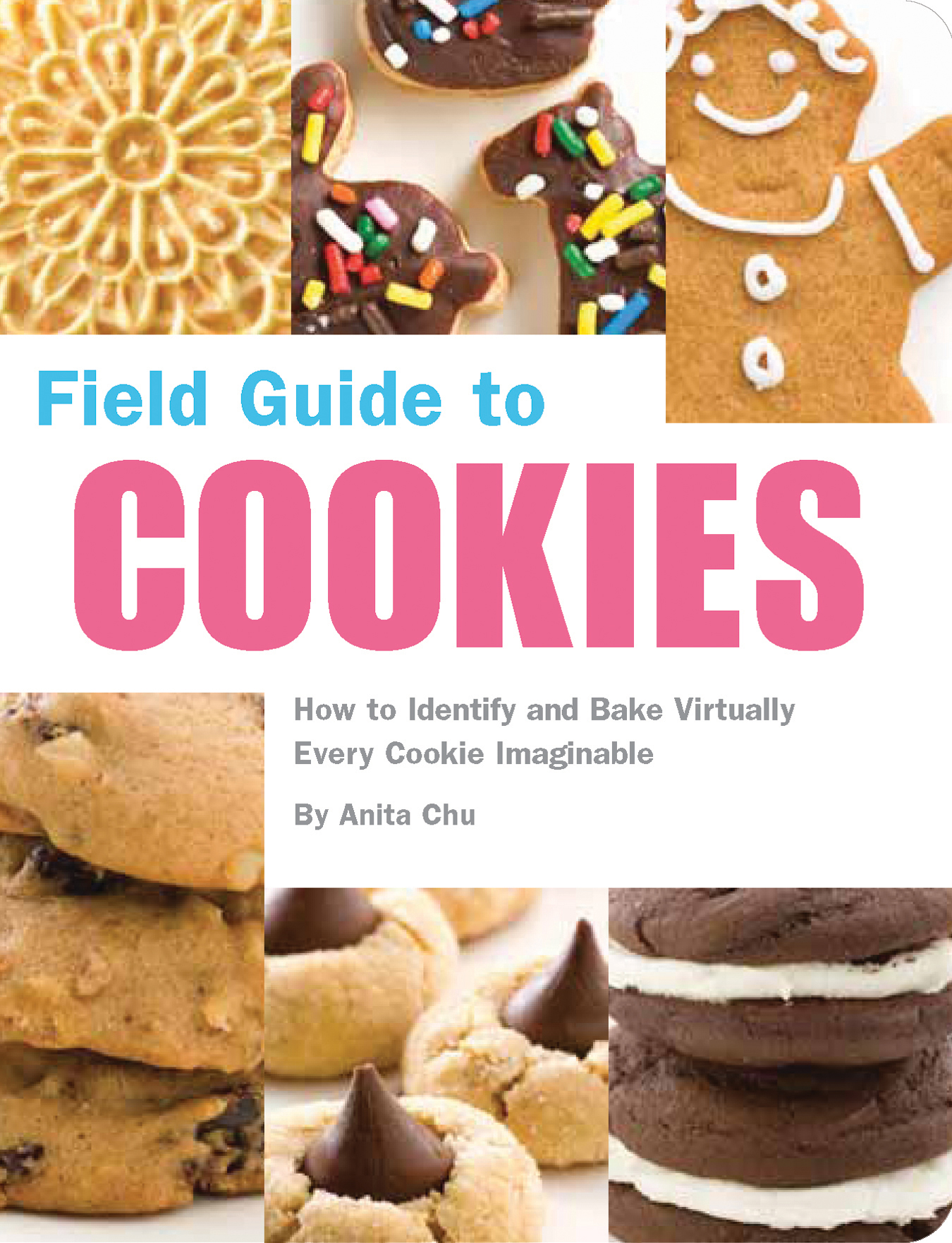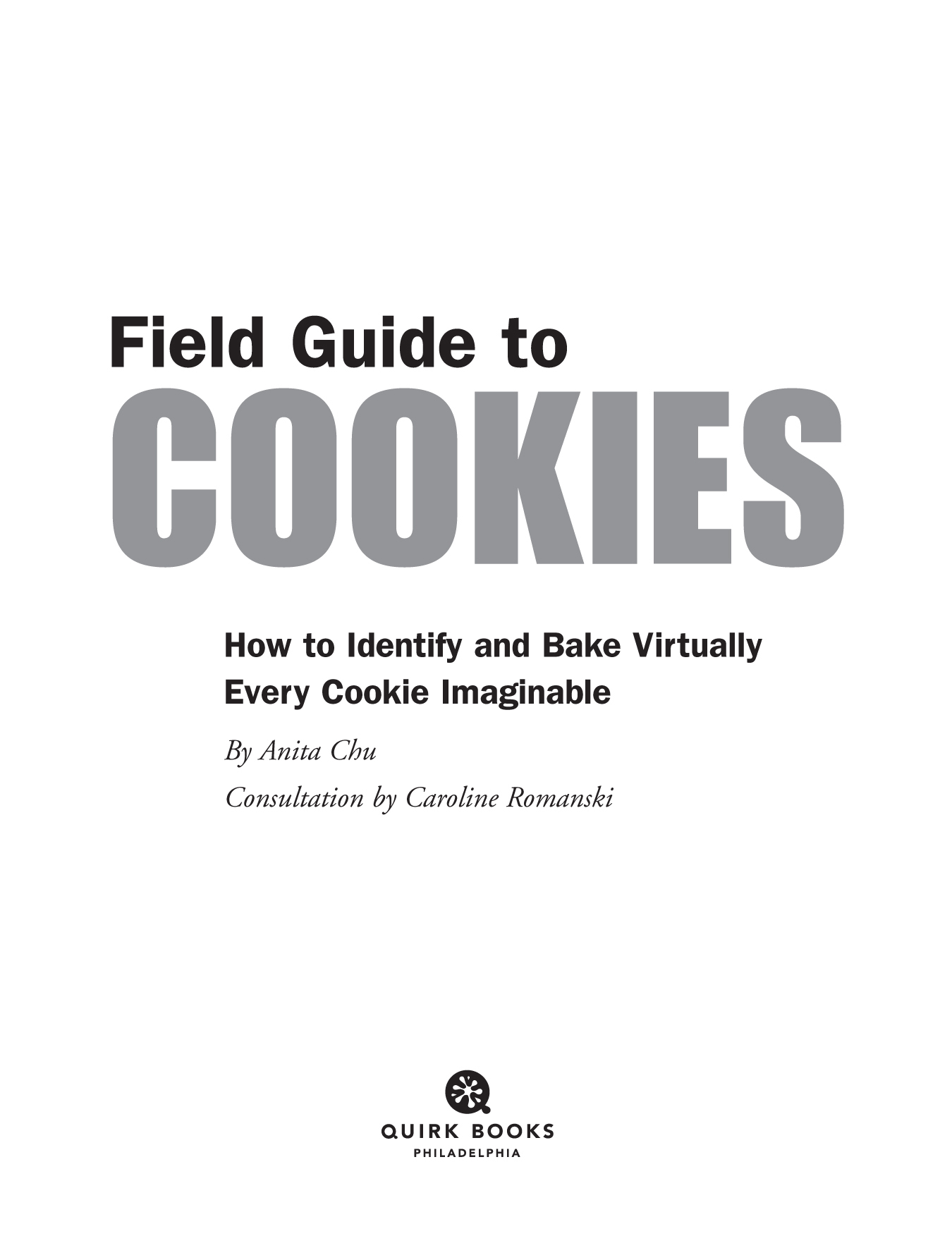DISCLAIMER
The world of cookies is very large and varied. While we have taken care to represent a large variety of those available, the authors and publisher cannot guarantee this guide addresses every possible cookie worldwide.
Copyright 2008 by Quirk Productions, Inc.
All rights reserved. No part of this book may be reproduced in any form without written permission from the publisher.
Library of Congress Cataloging in Publication Number: 2008926881
eBook ISBN: 978-1-59474-815-8
Trade Paperback ISBN: 978-1-59474-283-5
Designed by Michael Rogalski
Photography by Steve Legato
Iconography by Karen Onorato
Edited by Margaret McGuire and Erin Slonaker
Quirk Books
215 Church Street
Philadelphia, PA 19106
quirkbooks.com
v3.1
Contents
INTRODUCTION
Few things bring as much simple joy as a freshly baked cookie. Some may think cakes and tarts too time-consuming to make, or consider other fancy desserts too filling or complicated, but hardly anyone refuses a cookie. Cookies are easy to make, transport, and consumethe ultimate comfort food. These small, sweet confections carry associations of childhood, of watching mom stirring a batch of dough, or of eating a warm plate of cookies with a glass of milk. They are linked to many holidays and festivals around the world, where celebrations are capped with a tray of beautifully decorated cookies.
The word cookie comes from the Dutch word koekje , the diminutive form of koek , which means cake. But cookies are so much more than little cakesfor centuries, they have been baked as individually portioned sweet treats for special occasions, from religious holidays to birthdays. The first cookie-style sugar cakes were baked in 7th-century Persia, which was one of the first regions to cultivate sugar. Cookies can be found in an astonishing variety of forms around the world, but all cookies have several characteristics in common: They are individually portioned; they are firm and compact enough to be eaten by hand; and, with a few exceptions, they are flat compared with muffins or other pastries. There are a few basic cookie categories: drop cookie dough is dropped in spoonfuls, piped from a pastry bag, or dispensed with a cookie press; bar cookie dough is spread into a pan and baked, then cut into individual pieces; molded cookie dough is pressed into a mold with an imprinted design, or otherwise shaped before it is baked; rolled cookie dough is rolled out and cut into shapes with a cookie cutter. Elaborately decorated cookies are often rolled, since it creates a smooth surface perfect for decorating. Almost any cookie can be turned into a sandwich cookie by combining two cookies with a sweet filling, such as jam, chocolate, or ice cream.
This book will help you identify many of the most popular cookies around the world, discover what makes each one special, and recreate them in your home kitchen. You will find that even though many cookies appear different on the outside, they can be made with similar techniques. Youll also learn about some basic tools and techniques that will ensure bakery-perfect cookies every time, as well as simple ways to vary cookie recipes to further increase your repertoire. With this guide, youll never have to worry about an empty cookie jar at your house.
NOTES ON THE PERFECT COOKIE
Alterations and substitutions . The first time you try a recipe, follow it as written without alterations. Once you have an understanding of how the recipe works, play around with it to suit your tastes.
Baking time . In a just a few minutes, cookies can go from golden to burned. Check the cookies a few minutes before they are supposed to be done, but dont open the oven too wide; that lowers the temperature inside the oven and it will take longer for the cookies to bake.
Cookie size . Keep your cookies as close to the same size as possible so they will bake evenly.
Creaming . During the process of creaming, sugar cuts little air pockets into butter, giving cookies a fine, fluffy texture. For this reason, its important to use softened, room temperature butter. Beat butter first to soften it before adding sugar. Then cream the two ingredients for several minutes until the mixture lightens in color from yellow to almost white, and it becomes smooth and fluffy.
Folding . When folding ingredients into a batter, the goal is to incorporate them without deflating the mixture. Place lighter, drier ingredients on top of the wet batter and fold them in gently with a large rubber spatula, starting at the back edge of the bowl. Scoop down and toward you, bringing batter from the bottom up and over the ingredients on top. Rotate the bowl a quarter turn and repeat this motion.
Ingredient temperature . The temperature of ingredients is very important to their performance in a recipe. Be sure to note if a recipe calls for any of them to be cold or room temperature. Dry ingredients such as flour and sugar should always be at room temperature; if you have been storing them in the refrigerator take them out an hour or so before baking. Eggs should also be used at room temperature; if youve forgotten to take them out beforehand, warm them in a bowl filled with lukewarm water. If the recipe calls for cold butter, take it out right before you start the recipe, and use it quickly to prevent it from warming up and melting. If the butter is to be softened or room temperature, this means within a range of 65 to 70F. It should be soft enough to yield slightly beneath your finger, but not oily or melting. Take butter out of the refrigerator an hour before baking. If you slice a stick of butter into pieces, it will soften much faster.
Measuring . Careful and precise measuring of ingredients will help your cookies come out perfect every time. When measuring flour, spoon the flour into the measuring cup until it mounds over the top, then use an offset spatula or the edge of a knife to level it off. Do not use the measuring cup to scoop flour or shake the cup as you spoon flour in; it compacts too much flour into the cup. Measure flour first before sifting it. Use the same method of spooning in and leveling off when measuring granulated and confectioners sugar. When measuring brown sugar, lightly pack it into the measuring cup, then level the top off. When measuring liquids, use a glass measuring cup and check the liquid at eye level. The surface of the liquid will usually bow slightly in the middle; check the lowest point of the liquid, not the highest.
Melting chocolate . The best way to melt chocolate is on the stove in a double boiler or a metal or glass bowl set over a pot of simmering water. Be sure that the water in the pot doesnt touch the bottom of the bowl and that the bowl fits into the pot so steam wont escape. If any moisture gets into melting chocolate, it will become chunky and unusable. The key to melting chocolate is gentle, low heat. If chocolate burns, it becomes thick and clumpy. Take the bowl off the stove when the chocolate seems almost fully melted and then stir the mixture to melt the last small bits. Chocolate can be melted in the microwave, but proceed with caution. Microwave uncovered and in 30-second increments, stirring well after each session.
Mixing . A stand mixer is the easiest way to quickly and thoroughly mix ingredients. Dont mix more than necessarythe gluten in the flour will overdevelop, leading to tough cookies. When adding dry ingredients to dough, keep the speed on low to medium and mix only until the dry ingredients have been incorporated. Hand mixers take longer to bring dough together, so move the mixer around the bowl to thoroughly mix all parts of the dough. Whether using a stand mixer or hand mixer, scrape down the sides and bottom of the bowl at least once to catch any unincorporated bits. It is also possible for the strong of arm to make cookies by hand. All you need is a large bowl for the ingredients and a wooden spoon. Drop and bar cookies are the easiest to make by hand.


